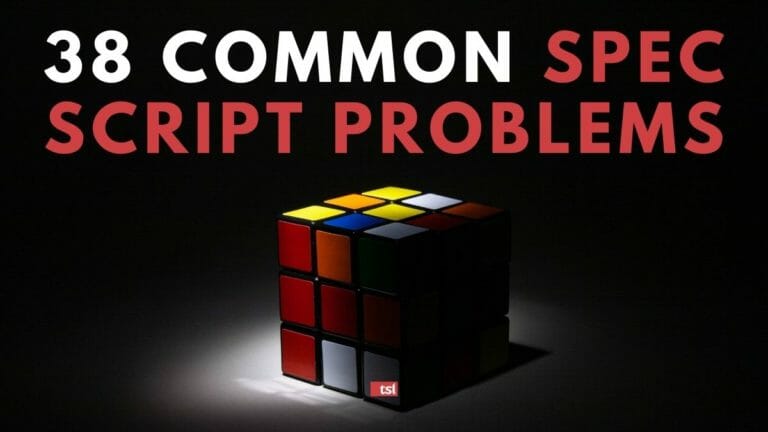By Ken Miyamoto · November 30, 2020

Spec scripts are a big part of how movies and tv shows get made. But writing a script “on spec” that actually sells is tough. These scripts don’t have a ready home, meaning no one is paying you to write them. So if you choose to write a spec script in hopes of selling it or using it as calling cards for representation and writing assignment consideration, you have to make a great impression. And that means wowing the person who reads your script — the script reader.
These professional readers read stacks of scripts every week, and they can spot an unoriginal or flawed script within the first few pages. Script readers want to find that glowing original script that stands out from the rest. They want to recommend your script. You just have to help them by writing a great script. And that starts by avoiding some of the most common story problems script readers see all the time.
Here are 38 of the most common story problems that script readers come across in spec scripts, and how you can avoid them so your screenplay has a better chance of getting into the hands of Hollywood decision-makers.
Anonymous Hollywood script reader, “Alex” read 300 scripts for five different companies. He gathered his collected findings and created an intriguing and informative screenwriting coverage infographic. Here are how the ratings for the 300 screenplays breaks down:
According to Alex, roughly 2.6 % of the 300 screenplays received a “Recommend.” That means the reader told their bosses that the screenplay was outstanding and should be acquired and produced. Recommends are very hard to come by in Hollywood. Most script readers will only find a few in their time as a reader.
29% of the scripts were Considers, which is actually a pretty high average. A Consider rating means that they’re essentially saying that both the writer and the script have some promising elements to consider — but the script isn’t ready yet. The potential is high though.
66% of the screenplays were Passes. Usually, the Passes are in the ninety percentiles. Either the story was bad, the writing was weak, or the concept alone just wasn’t right for the company. If you want to avoid getting a Pass rating, it helps to avoid some of the most common story problems in spec scripts.
Source: Reddit
This list features the biggest problem (#1) to the smallest (#38). Hopefully, this will help you identify some of these common spec script mistakes so you can improve your chances of a “Recommend” rating the next time you submit your script.
Write better spec scripts — that readers will love — by avoiding some of these common story and structure problems. If you’re looking for more feedback, check out TSL Notes, our professional script coverage service that will give you the feedback and notes you need to help you evolve your story, finish your screenplay, and get your script industry-ready for even the toughest script readers and competition judges. TSL Script coverage packages start for as low as $39.
For all the latest from The Script Lab, be sure to follow us on Twitter, Facebook, and Instagram.